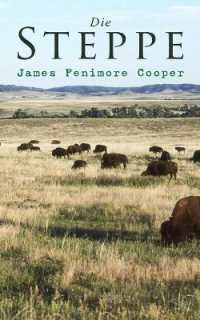- ホーム
- > 洋書
- > 英文書
- > Science / Mathematics
Full Description
Agriculture is currently facing multi-faceted threats in the form of unpredictable weather variability, frequent droughts and scarcity of irrigation water, together with the degradation of soil resources and declining environmental health. These stresses result in the modification of plant physiology to impart greater resilience to changing abiotic and biotic environments, but only at the cost of declining plant productivity. In light of these facts, assessing the status of natural resource bases, and understanding the mechanisms of soil-plant-environment interactions so as to devise adaptation and mitigation approaches, represent great and imminent challenges for all of us. In this context, it is essential to understand the potential applications of modern tools, existing coping mechanisms and their integration, as this will allow us to develop suitable advanced mitigation strategies.
From a broader perspective, the book deals with crop-environment interaction in thecontext of changing climatic conditions. To do so, it addresses four major aspects:
Understanding the mechanism of carbon dynamics in the soil-plant-environment continuum; greenhouse gas fluxes in agricultural systems; and soil properties influenced by climate change and carbon sequestration processes.
Mitigation and management of the photo-thermal environment to improve crop productivity; soil health under variable climate; reducing agro-ecosystem evapotranspiration losses through biophysical controls; and heat stress in field crops and its management.
Studying the impact of climate change on biotic environments; insect-pest interactions; manifestations of disease; and adaptation strategies for island agro-ecosystems.
Innovative approaches to assess stress impacts in crops, such as crop modeling, remote sensing, spectral stress indices etc.
The book presents a collection of contributions from authoritative experts in their respective fields. Offering young researchers new perspectives and future research directions, it represents a valuable guide for graduate students and academics alike.
Contents
Part-I: Understanding the process of interaction.- Chapter 1. Carbon dynamics in soil-plant-atmospheric continuum.- Chapter 2. Monitoring Greenhouse Gas Fluxes in Agro-Ecosystems.- Chapter 3. Methane emission from wetland rice agriculture-Biogeochemistry and environmental controls in the projected changing environment.- Chapter 4. Response of soil properties and soil microbial communities to the projected Climate Change Scenarios.- Chapter 5. Altitude regulates soil organic carbon accumulation: few case studies from hilly ecosystem of North-eastern Region of India.- Part-II: Making interaction favourable through management interventions.- Chapter 6. Exploitation of Photo-thermal environment concept in improving crop productivity.- Chapter 7. Heat stress in field crops: impact and management approaches.- Chapter 8. Identifying suitable soil health indicators under variable climate scenarios: A ready reckoner for soil management.- Chapter 9. Organic agriculture: Potentialsin managing abiotic stresses in crop production.- Chapter 10. Plant associated microbial interactions in the soil environment: role of endophytes in imparting abiotic stress tolerance to agricultural/& horticultural crops.- Part-III: Scientific approaches for assessing stress impacts on crops.- Chapter 11. Application of crop simulation models in managing irrigation water in agricultural field crops.- Chapter 12. Hyperspectral Remote Sensing: A tool to detect abiotic stresses in agriculture.- Chapter 13. Understanding the crop-climate interaction using process based simulation models.- Chapter 14. Canopy temperature based indices for water stress detection.- Part-IV: Stress impacts on agricultural commodities: few case studies.- Chapter 15. Shift in the manifestations of insect pests under predicted climatic change scenarios: Key challenges and adaptation strategies.- Chapter 16. Food chains and webs: Interaction with ecosystem.- Chapter 17. Performance of rice crop under enriched CO2 environment.







